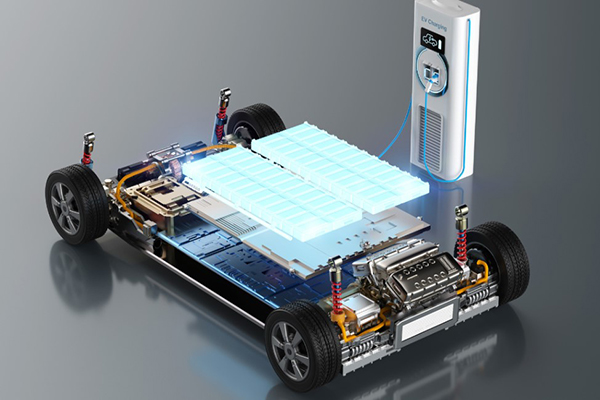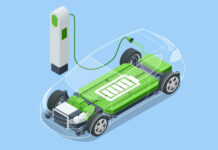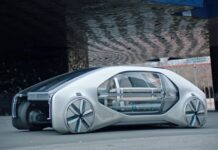As the world moves towards cleaner and more sustainable transportation options, electric vehicles (EVs) have gained significant attention for their potential to revolutionize the way we travel. In India, the government is actively encouraging the adoption of electric vehicles as a means to address various environmental and energy-related challenges. Let read about some potential benefits and challenges associated with the large-scale adoption of electric vehicles in India.
Benefits of Electric Vehicles
1. Energy Efficiency and Reduced Emissions: One of the key advantages of electric vehicles is their higher energy efficiency compared to conventional internal combustion engine vehicles. Electric motors convert 80-85% of stored energy into vehicle movement, making them significantly more efficient than traditional vehicles that are only 25-35% efficient. This increased efficiency translates to reduced energy consumption and lower emissions, contributing to cleaner air and a healthier environment.
2. Energy Security and Reduced Oil Imports: India’s heavy reliance on imported oil poses a significant economic challenge. By transitioning to electric vehicles powered by domestically generated electricity, the country can reduce its dependence on oil imports and enhance energy security. This shift can also help mitigate the impact of volatile global oil prices on the Indian economy.
3. Improved Air Quality: The adoption of electric vehicles can play a pivotal role in addressing the issue of local air pollution, particularly in densely populated urban areas. Traditional internal combustion engine vehicles emit harmful pollutants that contribute to poor air quality and various respiratory illnesses. Electric vehicles produce zero tailpipe emissions, leading to improved air quality and better public health outcomes.
4. Greenhouse Gas Emissions Reduction: While electric vehicles themselves produce zero tailpipe emissions, the overall reduction in greenhouse gas (GHG) emissions depends on the source of electricity used to charge their batteries. If India continues to transition towards cleaner energy sources like solar and wind, the GHG emissions associated with EVs can be significantly lower than those of conventional vehicles.
Challenges of Electric Vehicle Adoption
1. Battery Technology and Materials: The heart of an electric vehicle is its battery, and advancements in battery technology are crucial for the widespread adoption of EVs. However, the availability of critical battery materials such as lithium, cobalt, and nickel poses a challenge. These materials are essential for battery production and are subject to supply chain constraints, geopolitical factors, and environmental concerns.
2. Recycling and Disposal: As EV adoption increases, proper recycling and disposal of spent batteries become paramount. Recycling processes are energy-intensive and require specialized infrastructure. The lack of standardized recycling methods and regulations for EV batteries can lead to environmental issues if not managed properly.
3. Charging Infrastructure: Establishing a robust and widespread charging infrastructure is essential to alleviate “range anxiety” and encourage EV adoption. While efforts are underway to expand charging networks, ensuring equitable access to charging stations, especially in rural areas, remains a challenge.
4. Impact on Government Finances: Government incentives, subsidies, and tax breaks currently drive EV sales. However, a high rate of EV adoption could strain government finances, especially as revenue from fuel taxes decreases. Finding a balance between incentivizing EV adoption and maintaining fiscal stability is crucial.
Revolutionizing Urban Mobility: Electric Vehicles in Smart Cities
The global automobile industry has not only transformed economies but also catalysed technological innovation. While vehicles today offer advanced safety features and efficient travel, the environmental impact of traditional gasoline vehicles cannot be ignored. As the world grapples with climate change, the concept of sustainable transportation has gained traction, and electric vehicles (EVs) have emerged as a beacon of hope for reducing carbon emissions and ensuring cleaner air in urban centres.
The Green Drive: Tackling Emissions and Oil Dependency
The rise of EVs marks a significant shift towards cleaner transportation. The transport sector’s contribution to greenhouse gas emissions and energy consumption is substantial, with road transport alone accounting for over 70% of these emissions. To combat this, the electric revolution promises a drastic reduction in carbon footprints. Research indicates that widespread adoption of EVs can lead to a substantial decrease in greenhouse gas emissions, even when considering the energy sources used for electricity generation.
China, a leader in EV adoption, has set ambitious targets, aiming for electric vehicles to represent 20% of new car sales by 2025 and achieve a full transition to “new energy” vehicles by 2035. These efforts underline the transformative potential of EVs in curbing emissions and lessening oil dependency.
Smart Cities and Electric Mobility
The integration of EVs into smart city initiatives is a pivotal step towards sustainable urban development. Smart cities seek to optimize resource utilization, reduce emissions, and enhance overall quality of life. Electric vehicles play a key role in this vision by offering eco-friendly transportation options that align with the smart city ethos.
Despite their numerous benefits, the integration of EVs into smart cities presents challenges. High upfront costs, limited driving range, and charging infrastructure disparities have deterred many potential EV adopters. However, innovative solutions like battery swapping stations are gaining traction. These stations allow EV drivers to quickly swap depleted batteries for fully charged ones, mitigating range anxiety and enhancing convenience.
Battery Breakthroughs: Powering the Electric Future
A critical component of EV advancement is battery technology. Enhancements in energy density, charging speed, and lifespan have the potential to revolutionize the EV landscape. Researchers are exploring materials like grapheme to create batteries with faster charging times and higher energy storage capacities. As battery technology continues to evolve, the electric vehicle’s potential to reshape urban mobility becomes increasingly promising.
Government Policies: Driving Change
Government policies and incentives play a pivotal role in accelerating EV adoption. Subsidies, tax benefits, and investment in charging infrastructure have proven effective in bolstering the EV market. By prioritizing sustainable transportation options, governments can catalyse a shift towards cleaner, more efficient mobility solutions.
Revolutionizing the Electric Vehicle Industry: Breakthroughs in Battery Technology
The electric vehicle (EV) industry is undergoing a remarkable transformation, driven by a relentless pursuit of superior battery technology. With the limitations of conventional lithium-ion batteries becoming more evident, a dynamic race is underway among researchers, start-ups, and automakers to engineer breakthrough innovations. Exploring the exciting advancements in EV battery technology that promise to obliterate range anxiety, slash charging times, and make EV ownership more accessible than ever before.
Batteries beyond Boundaries
The road to an electrified future is being paved with unconventional ideas. Researchers at Chalmers University of Technology are pioneering the concept of batteries as structural components in EVs. Integrating carbon fiber and lithium iron phosphate into the battery design not only enhances energy storage but also adds structural rigidity, pushing the boundaries of battery functionality.
Carbon Nanotubes: Power Unleashed
NAWA Technologies is rewriting the rules with its Ultra-Fast Carbon Electrode. This innovation, driven by vertically aligned carbon nanotubes, brings a triple boost to battery power: tripled energy storage capacity, extended battery life, and the potential for an 80 percent charge in a mere five minutes. A game-changer that could roll into production as early as 2023, NAWA’s technology is poised to reshape the EV landscape.
Breaking Free from Cobalt’s Chains
The shackles of cobalt are being shattered by researchers at the University of Texas and SVOLT. These visionaries have replaced cobalt with high-nickel compositions, paving the way for eco-friendly, high-energy-density batteries. SVOLT’s cobalt-free batteries, boasting an impressive range of up to 500 miles on a single charge, are leading the charge toward a sustainable EV future.
Silicon’s Renaissance
Researchers at the University of Eastern Finland have tapped into an unlikely source for silicon – environmentally friendly barley husk ash. Their innovative silicon anode batteries, combining silicon micro particles and carbon nanotubes, promise a leap in battery performance, offering tantalizing possibilities for extending EV ranges.
Batteries from the Deep Blue
IBM Research has unlocked the ocean’s potential with battery chemistry derived from seawater. These batteries, surpassing the capabilities of lithium-ion counterparts, offer cost-efficiency, rapid charging, and higher energy density. Teaming up with Mercedes-Benz, IBM is steering the course toward a greener and more efficient EV future.
Empowering with Sand
The University of California Riverside is reshaping the landscape with sand-integrated batteries, while Sila Nano gains traction in commercializing the technology. Pure silicon from sand could revolutionize battery performance, offering a 40 percent boost. As Daimler and BMW back this innovation, the road ahead looks promising.
Wireless Wonders
Wi-Fi-powered EVs might soon be a reality, thanks to molybdenum disulphide and radio wave harvesting antennas. Though in early stages, this technology could eliminate the need for physical charging infrastructure, redefining the way we power our EVs.
A Symphony of Sound Energy
uBeam’s ultrasound charging technology, initially focused on smaller devices, harbours potential for EVs. By converting power into sound waves, it could pave the way for wireless energy transmission, a concept that holds promise for revolutionizing EV charging.
The Lightning-Fast Charge
StoreDot is rewriting the script on charging times with its organic peptide compound charger. Charging smartphones in a minute and working on EV batteries that charge in five minutes, this start-up is poised to redefine the EV charging experience.
Eternal Power: Nanowire Marvels
The University of California’s nanowire batteries promise an extraordinary future for EVs. With gold nanowires enduring over 200,000 recharging cycles without degradation, the road to everlasting, reliable EV batteries seems closer than ever.
Pioneering a Greener Tomorrow
The EV industry’s trajectory is poised for an exponential surge, with electric vehicles set to dominate global car sales. The strides in battery technology showcased illuminate the vast progress made in transcending the constraints of current lithium-ion batteries. From cobalt-free alternatives to silicon anodes, wireless charging to extended battery life, these innovations chart a course toward EVs with extended ranges, speedier charging, and heightened sustainability. As the battery revolution unfolds, Green Cars will keep you abreast of the latest developments propelling the EV transportation revolution forward. Embrace the change and join the journey to a greener tomorrow.
Electrifying the Future: The Global Shift toward Electric Vehicles and the Battery Revolution
In a world undergoing profound environmental and technological changes, the automobile industry is at the forefront of a revolution that could reshape the way we move, live, and even think about transportation. Among the nations spearheading this transformation, India stands out as a pivotal player. With its massive population, growing economy, and ambitious government policies, India’s journey towards full electrification of its automobile sector holds the promise of not just domestic benefits but global impacts.
The Indian EV Ecosystem: An Accelerating Momentum
India’s road to electric vehicle (EV) adoption has been nothing short of rapid and promising. As one of the world’s largest markets for two- and three-wheeled vehicles, as well as private and commercial cars, India has demonstrated its potential to drive the electric revolution on a grand scale. Momentum fueled by a synergy of factors, including government initiatives, growing consumer demand, and the entry of private players keen on EV technology.
Batteries: Powering the Electric Dreams
At the heart of this EV revolution lies the unsung hero: the battery. A symphony of factors, from enhanced battery technology to plummeting costs to the expansion of charging infrastructure, is fuelling the demand for batteries and reshaping the future of energy storage and transportation.
Charting the EV Growth Trajectory
India stands as one of the world’s largest markets for two- and three-wheeled vehicles, ranking among the top five globally for both private cars and commercial vehicles. The Indian EV market has shown remarkable growth, with 455,733 EV units sold in FY2022, according to JMK Research. The Ministry of Road Transport and Highways reported that as of July 2022, 1,334,385 electric vehicles were already on the roads in India.
The first quarter of 2023 witnessed continued progress in India’s EV sector. Electric vehicle sales continued to rise, showcasing consumer interest in cleaner and greener transportation options. A key highlight of Q1 was the announcement of the reduction in customs duty and taxes for lithium-ion batteries in the 2023 budget. This step is set to bolster domestic battery production, a crucial component of EV manufacturing.
State governments also played a pivotal role in shaping India’s EV landscape. Regions such as Assam, Telangana, Tamil Nadu, and Gujarat introduced policies and incentives to encourage EV manufacturing within their territories. Private sector involvement increased during Q1, with companies actively entering the EV market, fostering healthy competition and innovation.
The Path Forward: Projections and Potential
EV adoption in India holds profound global implications. The International Energy Agency reported that global EV sales doubled in 2021, with India aiming for EVs to represent 30% of all road traffic by 2023. This modest target, if achieved, will reverberate globally, transforming environmental and economic landscapes. As the world’s third-largest oil importer, India’s transition to EVs will disrupt global oil markets and mitigate its own oil dependency, setting a model for other emerging economies. EV adoption in India can drastically reduce air and noise pollution, contributing to global efforts in combating climate change.
India’s challenges are matched by its potential to overcome them, making significant strides toward EV adoption. Existing policies like National Electric Mobility Mission Plan (NEMMP) and Faster Adoption and Manufacturing of (Hybrid &) Electric Vehicles in India (FAME), coupled with tax incentives, provide a foundation for accelerated EV adoption. Continued investment in alternative energy sources is vital. Private entities are at the forefront of building charging infrastructure, creating innovative battery technologies, and offering affordable EV models. Collaboration with governments will expedite progress. Consumer resistance can be mitigated through awareness campaigns highlighting the long-term benefits of EVs, supported by an expanding charging network.
Unravelling the Driving Forces
A perfect storm of driving forces is propelling this EV revolution. Government incentives, emissions regulations, and environmental mindfulness are key players. Incentives like tax credits and rebates are inspiring consumer interest, while stringent emission standards are steering automakers toward electrification to meet environmental targets. This amalgamation of factors is shifting consumer consciousness towards a greener, more sustainable mode of transportation.
Advancements in Battery Technology: Powering the Future
The secret sauce behind the EV revolution lies in battery technology advancements. Each passing year brings more powerful, efficient, and EV-friendly batteries to the market. The coveted prize? Increased energy density. This critical measure dictates how much energy can be stored in a given weight or volume of battery. By achieving higher energy density, EVs can conquer greater distances on a single charge, silencing range anxiety.
The Cost Equation: Declining Battery Costs
As battery production scales up and technology marches forward, the cost of manufacturing batteries is undergoing a steady descent. The economies of scale are playing a pivotal role in driving down costs. With higher demand, manufacturers are realizing more efficient production processes and raw material procurement, directly impacting EV affordability. This ongoing cost decline is projected to persist, further fuelling the EV surge.
Beyond the Road: Batteries Unleashed
The EV battery revolution transcends the highway. Electric bicycles, scooters, buses, and commercial vehicles are ushering in a new era of sustainable transportation. Batteries’ versatility extends to industrial applications, where they power electric forklifts and renewable energy storage solutions, reshaping the grid of the future.
A New Dawn of Transportation
India’s path to full EV adoption is not without challenges. The dependence on coal for energy generation could undermine the environmental benefits of EVs. Addressing energy sources, underdeveloped charging infrastructure, battery limitations, and consumer resistance poses substantial hurdles. Nonetheless, with government initiatives, innovative solutions, and industry collaborations, these challenges can be surmounted.
India’s EV future rests on a strong foundation of government policies, consumer demand, and technological advancements. Collaborations between public and private sectors, the expansion of charging infrastructure, and the development of innovative solutions are vital. Private players can play a pivotal role by providing smart digital solutions that facilitate seamless charging experiences, fostering consumer awareness, and boosting confidence in EV technology. As India embarks on this transformative journey, the prospects of sustainable transportation and a greener future loom large on the horizon.















